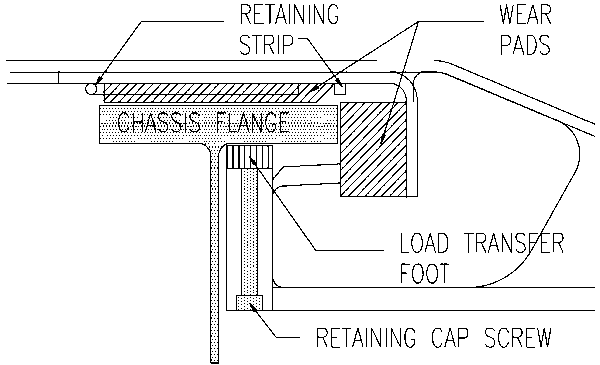S0036 Wear Pad Replacement on SB330
S0036 PDF File
|
Version 1
|
Structural
|
30-3-07
|
Procedure for the replacement of wear pads on model SB330
The wear pads mounted under the SB330 crane base are designed to run dry and do not require greasing. However, regular inspection is required. If there are any unusual sounds coming from the module area and/or there is excessive clearance between the load transfer feet and the flange, the wear pads should be inspected.
If the clearance between the load transfer foot and the chassis flange is greater than 4mm the pads should be replaced with genuine replacement parts. Please note original pads are 10mm thick.

Following is the procedure for the replacement of these wear pads:
- Position the two crane assemblies to the 20' position.
- Unbolt the load transfer foot from the base assembly. This will allow the crane base assembly to be raised sufficiently above the top flange to remove and replace the wear pads.
- To access the " Non loading side":
- Raise the bottom and top arms to their maximum extension (you will need to enter Manual Override Mode to do this) while stabilizers are off the ground. This allows the crane base to rise and the old pads can now be replaced. Lower the top and bottom arms and ensure that the wear pads are correctly located in their cavity.
- To access the " Loading side", tilt the stabiliser leg up to its maximum position and then extend the stabiliser extension until the crane base rises allowing the replacement of the wear pads. Slowly retract the stabiliser extension and ensure that the wear pads are correctly located in their cavity.
- Refit the load transfer foot once the new pads are in place. Inspect the clearance between the load transfer foot and the chassis flange. If the clearance is greater than 1mm the load transfer foot must be shimmed to attain this dimension. Torque cap screws to 45Nm.
- Test run the Sidelifter and ensure pads remain in their correct positions and that there are no unusual noises coming from the base assembly area.

